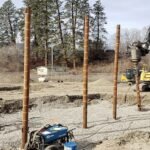In recent years, 3D printing in Rajahmundry has gained traction not only in local businesses but also in global industries like aerospace. Aerospace engineering demands lightweight materials, design precision, and cost-effective production—all areas where 3D printing excels. From manufacturing intricate engine components to creating lightweight cabin interiors, 3D printing has transformed how we approach design and fabrication in the aerospace sector.
Thanks to additive manufacturing, engineers can now prototype and produce parts faster than traditional methods. While conventional manufacturing involves carving parts from large blocks, 3D printing builds components layer by layer. This results in minimal waste, lower costs, and greater customization, making it ideal for aviation and space exploration. Even local players such as a notebook manufacturing company near me have started exploring how 3D printing can speed up prototyping processes for their products.
What Key Aerospace Parts Are Produced Using 3D Printing?
One of the most significant applications of 3D printing in aerospace is the production of functional flight parts. These components are often lighter and more efficient than those made using traditional manufacturing. Common 3D-printed aerospace parts include:
- Turbine blades
- Fuel nozzles
- Brackets and ducts
- Heat exchangers
- Structural components
For instance, General Electric (GE) Aviation successfully 3D prints fuel nozzles for its jet engines. These parts are not only more durable but also reduce engine weight by 25%, improving fuel efficiency. Similarly, brackets that once required multiple parts and fasteners can now be 3D printed as a single piece, reducing both weight and potential failure points.
Such precision and efficiency mirror the innovations seen in local notebook manufacturing companies near me, where optimized production helps create personalized and efficient products.
How Is 3D Printing Used in Aircraft Cabin Design?
Aircraft cabin interiors must be light but strong enough to withstand various stresses during flight. Traditional fabrication methods often limit the customization of these components. However, 3D printing allows manufacturers to design cabin parts like seat frames, tray tables, armrests, and ventilation grills with reduced weight and enhanced ergonomics.
By using strong but lightweight polymers, manufacturers can cut down weight significantly. Airbus, for example, uses 3D printing to fabricate over 1,000 parts for its A350 XWB aircraft. This helps the company achieve better fuel efficiency while still adhering to strict safety standards.
In Rajahmundry, even 3D printing service providers are beginning to explore how similar principles can be applied to industries like furniture design and even educational tools—innovations inspired by aerospace practices.
Can 3D Printing Enhance Rapid Prototyping in Aerospace?
Yes, one of the greatest advantages of 3D printing in aerospace is rapid prototyping. The traditional development of aerospace components can take weeks or even months. With 3D printing, engineers can produce and test multiple iterations within days. This accelerates innovation and reduces the time required to bring a product to market.
Whether it’s developing a new winglet design or testing airflow within an engine component, 3D printing provides the flexibility to test models under real-world conditions. This mirrors processes seen in notebook manufacturing, where local notebook manufacturing companies near me often use prototypes to finalize cover designs or interior layouts.
In fact, rapid prototyping via 3D printing in Rajahmundry is increasingly adopted in various sectors—from industrial equipment parts to educational kits.
What Role Does 3D Printing Play in Satellite and Spacecraft Manufacturing?
The benefits of 3D printing extend far beyond Earth’s atmosphere. Space agencies like NASA and private companies such as SpaceX use 3D printing to manufacture parts for rockets and satellites. These components must be highly durable, heat resistant, and lightweight.
Applications include:
- Propulsion system components
- Satellite brackets and antennas
- Space-grade tools and fixtures
- Thermal shields
Notably, NASA’s Perseverance rover, which landed on Mars, included several 3D-printed parts. These parts passed rigorous testing to ensure they could endure the extreme environment of space.
As 3D printing continues to evolve, local innovation hubs such as those offering 3D printing in Rajahmundry may one day contribute to India’s space ambitions by producing test parts and educational models used in satellite programs or space labs.
How Does 3D Printing Improve Sustainability in Aerospace?
Sustainability is a major focus in aerospace, and 3D printing supports greener practices. Because it is an additive process, it creates significantly less material waste compared to subtractive manufacturing methods. This reduces the carbon footprint of production.
Additionally, by enabling lighter components, 3D printing reduces fuel consumption and emissions during flight. Aerospace companies also recycle metal and plastic powders used in 3D printers, promoting a closed-loop manufacturing process.
Similarly, notebook manufacturing companies near me are also taking notes from this sustainable approach. Some are exploring biodegradable materials and additive manufacturing for low-waste customization of notebooks and office supplies.
How Are 3D Printing Materials Tailored for Aerospace Needs?
Aerospace demands materials that can withstand extreme stress, temperature, and pressure. Fortunately, 3D printing can handle a variety of advanced materials tailored for these conditions. Common aerospace-grade 3D printing materials include:
- Titanium alloys – Known for their strength and heat resistance.
- Aluminum alloys – Lightweight and corrosion-resistant.
- Inconel – A nickel-chromium alloy perfect for high-temperature applications.
- High-performance polymers – Such as PEEK and ULTEM for cabin interiors.
These materials provide reliability while supporting complex geometries that are difficult to achieve through traditional machining. In Rajahmundry, 3D printing startups are starting to explore advanced resins and filaments to cater to diverse needs beyond aerospace, such as tools for local industries and schools.
What Is the Future of 3D Printing in Aerospace and Beyond?
The future of 3D printing in aerospace looks promising. As printers become faster and more capable of working with composite materials, we can expect further adoption across commercial, military, and spaceflight sectors. Entire aircraft components, even small UAVs (unmanned aerial vehicles), may one day be fully 3D printed.
Moreover, integration with AI and simulation tools will enable smart manufacturing, where machine learning algorithms optimize component designs for better performance and material savings.
On a local scale, services offering 3D printing in Rajahmundry are evolving as key partners for industries that require fast prototyping, custom production, or educational models. Interestingly, these innovations influence other sectors too. For example, a notebook manufacturing company near me may use 3D-printed molds, packaging tools, or promotional items to reduce turnaround times and costs.
Conclusion: Why Is 3D Printing So Vital in Aerospace?
3D printing is not just a manufacturing trend—it’s a transformation. In aerospace, it provides unmatched advantages in weight reduction, design flexibility, speed, and sustainability. Whether used for engine parts, spacecraft components, or rapid prototyping, 3D printing delivers solutions that traditional methods cannot match.
In India, and particularly with emerging technologies in 3D printing in Rajahmundry, there’s potential for local businesses to support or even contribute to global aerospace advancements. Even industries like notebook manufacturing companies near me are learning from aerospace strategies to innovate their own production processes.
As the aerospace industry continues to push boundaries, one thing is clear: 3D printing will be at the heart of its progress—on Earth and beyond.


